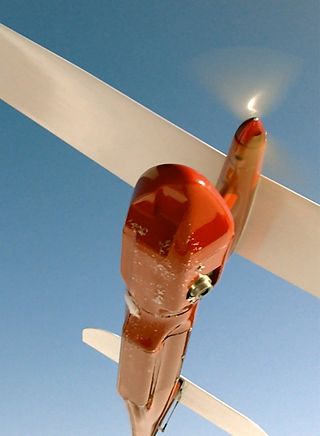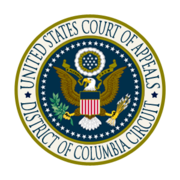
An unmanned aerial vehicle (UAV), commonly known as a drone, is an aircraft without any human pilot, crew, or passengers on board. UAVs were originally developed through the twentieth century for military missions too "dull, dirty or dangerous" for humans, and by the twenty-first, they had become essential assets to most militaries. As control technologies improved and costs fell, their use expanded to many non-military applications. These include aerial photography, precision agriculture, forest fire monitoring, river monitoring, environmental monitoring, policing and surveillance, infrastructure inspections, smuggling, product deliveries, entertainment, and drone racing.

Aerial photography is the taking of photographs from an aircraft or other airborne platforms. When taking motion pictures, it is also known as aerial videography.
Bethel School District v. Fraser, 478 U.S. 675 (1986), was a landmark decision of the Supreme Court of the United States in which the Court upheld the suspension of a high school student who delivered a sexually suggestive speech at a school assembly. The case involved free speech in public schools.
Florida v. Riley, 488 U.S. 445 (1989), was a United States Supreme Court decision which held that police officials do not need a warrant to observe an individual's property from public airspace.
California v. Greenwood, 486 U.S. 35 (1988), was a case in which the Supreme Court of the United States held that the Fourth Amendment does not prohibit the warrantless search and seizure of garbage left for collection outside the curtilage of a home.
In US law, false light is a tort concerning privacy that is similar to the tort of defamation. The privacy laws in the United States include a non-public person's right to protection from publicity that creates an untrue or misleading impression about them. That right is balanced against the First Amendment right of free speech.
In United States constitutional law, expectation of privacy is a legal test which is crucial in defining the scope of the applicability of the privacy protections of the Fourth Amendment to the U.S. Constitution. It is related to, but is not the same as, a right to privacy, a much broader concept which is found in many legal systems. Overall, expectations of privacy can be subjective or objective.

First-person view (FPV), also known as remote-person view (RPV), or video piloting, is a method used to control a radio-controlled vehicle from the driver or pilot's view point. Most commonly it is used to pilot a radio-controlled aircraft or other type of unmanned aerial vehicle (UAV) such as a military drone. The vehicle is either driven or piloted remotely from a first-person perspective via an onboard camera, fed wirelessly to video FPV goggles or a video monitor. More sophisticated setups include a pan-and-tilt gimbaled camera controlled by a gyroscope sensor in the pilot's goggles and with dual onboard cameras, enabling a true stereoscopic view.
The Next Generation Air Transportation System (NextGen) is an ongoing United States Federal Aviation Administration (FAA) project to modernize the National Airspace System (NAS). The FAA began work on NextGen improvements in 2007 and plans to finish the final implementation segment by 2030. The goals of the modernization include using new technologies and procedures to increase the safety, efficiency, capacity, access, flexibility, predictability, and resilience of the NAS while reducing the environmental impact of aviation.
Federal Aviation Administration v. Cooper, 566 U.S. 284 (2012), was a United States Supreme Court case in which the Court held that "actual damages" under the Privacy Act of 1974 is not clear enough to allow damages for suits for mental and emotional distress. The reasoning behind this is that the United States Congress, when authorizing suit against the government, must be clear in waiving the government's sovereign immunity.
Drone journalism is the use of drones, or unmanned aircraft systems (UAS), for journalistic purposes. According to the Federal Aviation Administration, "an unmanned aircraft is a device that is used, or is intended to be used, for flight in the air with no onboard pilot".

American Civil Liberties Union v. Clapper, 785 F.3d 787, was a lawsuit by the American Civil Liberties Union (ACLU) and its affiliate, the New York Civil Liberties Union, against the United States federal government as represented by then-Director of National Intelligence James Clapper. The ACLU challenged the legality and constitutionality of the National Security Agency's (NSA) bulk phone metadata collection program.
The US Federal Aviation Administration has adopted the name small unmanned aircraft system (sUAS) to describe aircraft systems without a flight crew on board weighing less than 55 pounds. More common names include UAV, drone, remotely piloted vehicle (RPV), remotely piloted aircraft (RPA), and remotely operated aircraft (ROA). These unmanned aircraft flown in the USA's National Airspace System must operate under the rules of a Community Based Organization for recreational purposes or 14 CFR Part 107 for commercial operations. All UAVs weighing more than 250 grams flown for any purpose must be registered with the FAA.

Regulation of unmanned aerial vehicles (UAVs) involves setting safety requirements, outlining regulations for the safe flying of drones, and enforcing action against errant users.

The Commercial UAS Modernization Act is a bill introduced in the 114th Congress by U.S. Senators Cory Booker (D-NJ) and John Hoeven (R-ND) that would create temporary guidelines for the use of unmanned aircraft systems and regulations for the commercial drone industry. Most commercial use of drones in the U.S. is currently banned by the Federal Aviation Administration (FAA).
The Drone Federalism Act of 2017 is a bill introduced in the 115th Congress by U.S. Senators Tom Cotton (R-AR), Dianne Feinstein (D-CA), Mike Lee (R-UT), and Richard Blumenthal (D-CT) on May 25, 2017. The bill would "affirm state regulatory authority regarding the operation of unmanned aerial systems (UAS), or drones."
Human bycatch is a term for people who are unintentionally caught on film, in photos, or acoustically recorded on equipment used to monitor wildlife or habitats for the purpose of conservation, or environmental law enforcement. It comes from the term bycatch, which is used in fishing practices to designate non-target species that are caught in a fishing net. Nearly every remote monitoring study contains human by-catch, yet there are no standardized rules or policies regarding what the researchers can or should do with their data.
The Federal Aviation Administration (FAA) set the effective date of March 16, 2021 for Remote ID, the rule and regulation applied to operations of any unmanned aircraft (UA) required to register a unique remote identification number to the FAADroneZone registration portal for unmanned aircraft. United States Congress elected the FAA with the ability to do so as the authority of aviation safety regulation and enforcement. FAA's Remote ID along with all other federal agency rules and regulation are published first published in the Federal Register (FR) and then their respective chapters in Code of Federal Regulations (CFR) when the date the final rules enactment arrives. Two types of remote ID are available to UA operators that comply with Remote Identification of Unmanned Aircraft, standard remote identification and remote identification modules.

Xizmo Media Productions LLC v. City of New York is a pending United States federal court case where the company Xizmo Media Productions argues that the New York City's "Avigation" law, which in effect is a ban on unmanned aerial vehicles within New York City, violates the First Amendment to the United States Constitution. Xizmo argues that New York City's drone ban renders an "inability [for Xizmo] to gather aerial imagery interfering with its directors’ artistic expression". The lawsuit, which is taking place in the United States District Court for the Eastern District of New York, will be decided by federal judge Eric N. Vitaliano.

The aerial surveillance doctrine is the legal doctrine in the United States of America that under the Fourth Amendment, aerial surveillance of an individual’s property does not inherently constitute a search for which law enforcement must obtain a warrant. Courts have used several factors–sometimes only one or a few, other times many or all of them–to determine whether the surveillance in question is a search in violation of one’s constitutional rights: the object of the surveillance, the technology employed, the duration of the surveillance, scope of aggregated information, and the vantage point from which the surveillance is conducted.








